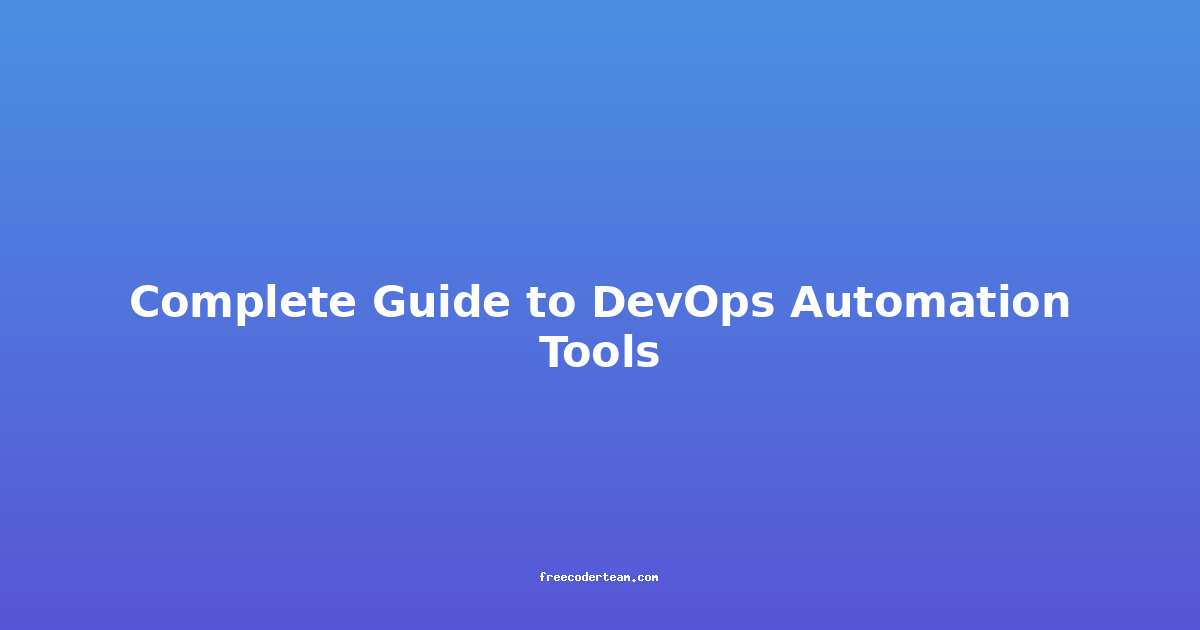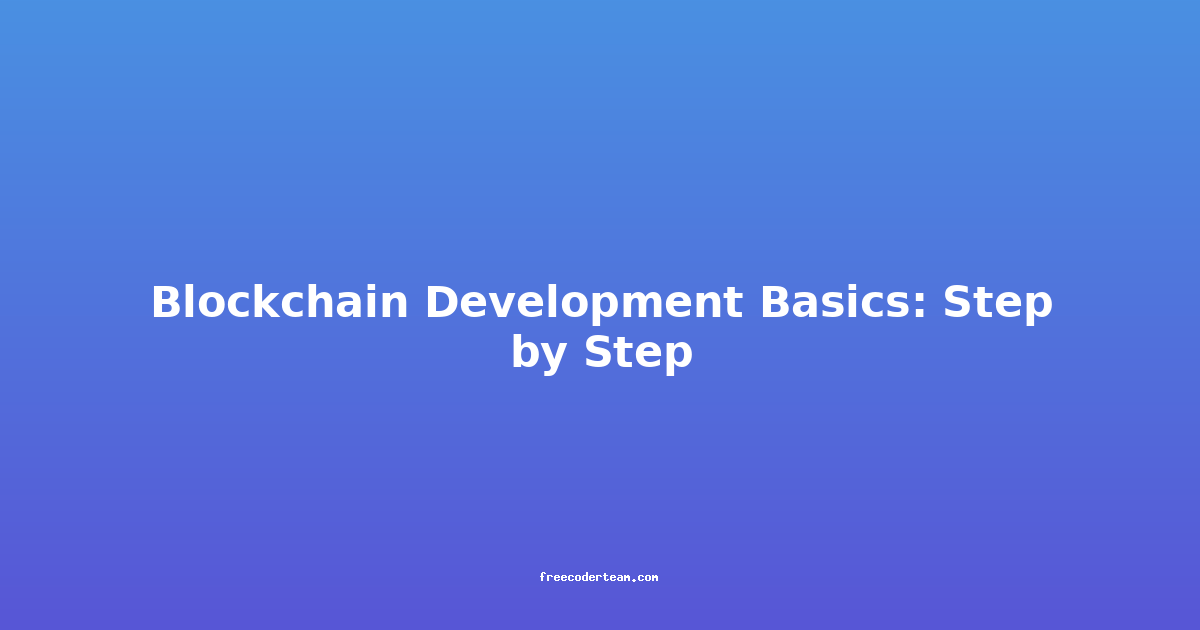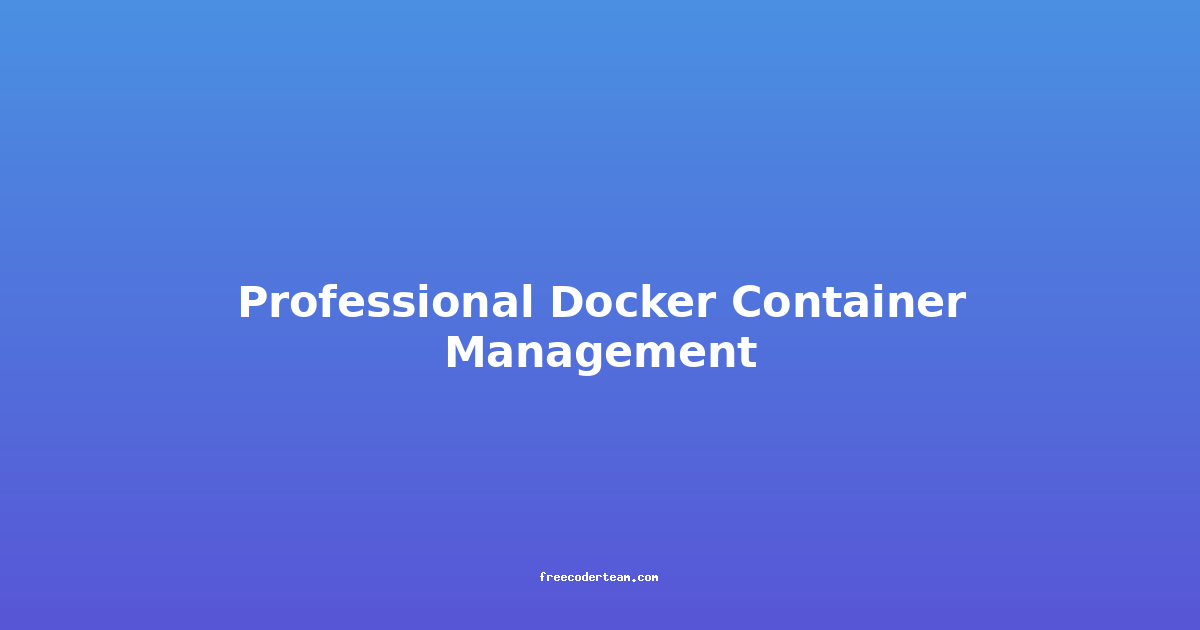Complete Guide to DevOps Automation Tools: A Comprehensive Overview
DevOps automation is the backbone of modern software development, enabling teams to streamline processes, reduce manual errors, and accelerate delivery cycles. By automating repetitive tasks, teams can focus on innovation and problem-solving rather than mundane operations. In this comprehensive guide, we'll explore the key DevOps automation tools, their use cases, best practices, and actionable insights to help you implement them effectively.
Table of Contents
- Introduction to DevOps Automation
- Key DevOps Automation Tools
- 1. CI/CD Tools
- Jenkins
- GitHub Actions
- GitLab CI/CD
- 2. Configuration Management Tools
- Ansible
- Chef
- Puppet
- 3. Containerization and Orchestration Tools
- Docker
- Kubernetes
- 4. Monitoring and Logging Tools
- Prometheus
- ELK Stack (Elasticsearch, Logstash, Kibana)
- Grafana
- 1. CI/CD Tools
- Best Practices for DevOps Automation
- Actionable Insights and Practical Examples
- Conclusion
Introduction to DevOps Automation
DevOps automation is the practice of using tools and technologies to automate repetitive, time-consuming tasks in the software development lifecycle. This includes tasks like building, testing, deploying, monitoring, and scaling applications. By automating these processes, teams can achieve faster feedback loops, improve collaboration, and reduce the risk of human error.
Key benefits of DevOps automation include:
- Increased Efficiency: Automating manual tasks reduces the time spent on repetitive work.
- Improved Reliability: Consistent automation ensures that processes are executed the same way every time.
- Faster Time-to-Market: Continuous integration and deployment (CI/CD) pipelines enable rapid delivery of software updates.
- Scalability: Automation tools can handle large-scale deployments and infrastructure management.
Key DevOps Automation Tools
1. CI/CD Tools
CI/CD tools are essential for automating the build, test, and deployment phases of software development. They enable teams to deliver code changes quickly and reliably.
Jenkins
Jenkins is one of the most popular open-source CI/CD tools. It is highly customizable and can be extended with plugins to integrate with various tools and platforms.
Key Features:
- Pipeline as Code: Jenkins pipelines allow you to define your CI/CD process in a declarative or scripted format.
- Extensibility: Jenkins supports a wide range of plugins for integration with version control systems, testing frameworks, and deployment platforms.
- Scalability: Jenkins can handle large-scale builds and deployments.
Example: Jenkins Pipeline Script
pipeline {
agent any
stages {
stage('Build') {
steps {
sh 'mvn clean package'
}
}
stage('Test') {
steps {
sh 'mvn test'
}
}
stage('Deploy') {
steps {
sh 'scp target/myapp.jar user@server:/deploy/'
}
}
}
}
GitHub Actions
GitHub Actions is a built-in CI/CD tool that integrates seamlessly with GitHub repositories. It is highly scalable and supports a wide range of workflows.
Key Features:
- Integration with GitHub: Easy to set up and manage workflows directly in your repository.
- Scalable and Flexible: Supports complex workflows with multiple jobs and parallel execution.
- Community-Driven: A vast ecosystem of reusable actions for common tasks.
Example: GitHub Actions Workflow
name: CI
on:
push:
branches: [ main ]
pull_request:
branches: [ main ]
jobs:
build:
runs-on: ubuntu-latest
steps:
- uses: actions/checkout@v2
- name: Set up JDK 11
uses: actions/setup-java@v2
with:
java-version: '11'
- name: Build with Maven
run: mvn clean package
- name: Test with Maven
run: mvn test
GitLab CI/CD
GitLab CI/CD is another powerful CI/CD tool that integrates seamlessly with GitLab repositories. It is known for its ease of use and comprehensive feature set.
Key Features:
- Integration with GitLab: Built-in support for GitLab repositories and features like merge requests and issue tracking.
- Scalable and Secure: Supports multi-project pipelines and secure deployment workflows.
- Community and Enterprise Options: Available as both open-source and enterprise versions.
Example: GitLab CI/CD Configuration
image: maven:3.8.1-jdk-11
stages:
- build
- test
- deploy
build:
stage: build
script:
- mvn clean package
test:
stage: test
script:
- mvn test
deploy:
stage: deploy
script:
- scp target/myapp.jar user@server:/deploy/
2. Configuration Management Tools
Configuration management tools help automate the provisioning and management of infrastructure and application environments.
Ansible
Ansible is a powerful and easy-to-use configuration management tool. It uses a simple YAML-based syntax and does not require agents on target machines.
Key Features:
- Agentless: Ansible manages remote machines without requiring an agent to be installed.
- Idempotency: Ansible ensures that configurations are applied consistently, even if the same playbook is run multiple times.
- Extensive Module Library: Supports a wide range of modules for managing infrastructure, applications, and services.
Example: Ansible Playbook
---
- name: Install and configure Nginx
hosts: webservers
become: yes
tasks:
- name: Ensure Nginx is installed
apt:
name: nginx
state: present
- name: Start and enable Nginx service
service:
name: nginx
state: started
enabled: yes
- name: Copy custom Nginx configuration
copy:
src: nginx.conf
dest: /etc/nginx/nginx.conf
owner: root
group: root
mode: '0644'
Chef
Chef is a configuration management tool that uses a declarative approach to define system configurations. It is highly flexible and supports complex automation scenarios.
Key Features:
- Declarative Syntax: Chef uses a Ruby-based DSL to define system states.
- Chef Server: Centralized management of configurations and cookbooks.
- Community Cookbooks: A vast library of reusable cookbooks for common tasks.
Example: Chef Recipe
package 'nginx' do
action :install
end
service 'nginx' do
action [:start, :enable]
end
template '/etc/nginx/nginx.conf' do
source 'nginx.conf.erb'
owner 'root'
group 'root'
mode '0644'
end
Puppet
Puppet is another popular configuration management tool that uses a declarative approach. It is known for its robustness and scalability.
Key Features:
- Declarative Syntax: Puppet uses a domain-specific language (DSL) to define system states.
- Puppet Enterprise: Offers advanced features like orchestration and reporting.
- Idempotency: Ensures consistent configuration application.
Example: Puppet Manifest
package { 'nginx':
ensure => installed,
}
service { 'nginx':
ensure => running,
enable => true,
}
file { '/etc/nginx/nginx.conf':
source => 'puppet:///files/nginx.conf',
owner => 'root',
group => 'root',
mode => '0644',
}
3. Containerization and Orchestration Tools
Containerization and orchestration tools are essential for managing modern microservices-based applications.
Docker
Docker is the industry-standard tool for containerization. It allows developers to package applications and their dependencies into lightweight, portable containers.
Key Features:
- Containerization: Docker containers are lightweight and portable, making it easy to run applications consistently across different environments.
- Docker Compose: Simplifies the management of multi-container applications.
- Docker Hub: A centralized registry for storing and sharing Docker images.
Example: Dockerfile
FROM python:3.9-slim
WORKDIR /app
COPY requirements.txt .
RUN pip install --no-cache-dir -r requirements.txt
COPY . .
CMD ["python", "app.py"]
Kubernetes
Kubernetes is the leading platform for container orchestration. It automates the deployment, scaling, and management of containerized applications.
Key Features:
- Orchestration: Automates the deployment, scaling, and management of containerized applications.
- Self-Healing: Automatically restarts failed containers and maintains desired state.
- Service Discovery: Built-in support for service discovery and load balancing.
Example: Kubernetes Deployment YAML
apiVersion: apps/v1
kind: Deployment
metadata:
name: myapp
spec:
replicas: 3
selector:
matchLabels:
app: myapp
template:
metadata:
labels:
app: myapp
spec:
containers:
- name: myapp
image: myapp:latest
ports:
- containerPort: 8080
4. Monitoring and Logging Tools
Monitoring and logging tools are crucial for ensuring the health and performance of applications and infrastructure.
Prometheus
Prometheus is an open-source monitoring and alerting toolkit. It is highly scalable and integrates well with other tools.
Key Features:
- Metrics Collection: Collects time-series data from various sources.
- Alerting: Built-in alerting rules for proactive monitoring.
- Integration: Works seamlessly with other tools like Grafana for visualization.
Example: Prometheus Configuration
global:
scrape_interval: 15s
scrape_configs:
- job_name: 'prometheus'
static_configs:
- targets: ['localhost:9090']
ELK Stack (Elasticsearch, Logstash, Kibana)
The ELK Stack is a popular logging and analytics platform. It provides powerful tools for collecting, processing, and visualizing log data.
Key Features:
- Elasticsearch: Stores and indexes log data for fast querying.
- Logstash: Processes and transforms log data.
- Kibana: Provides a visual interface for analyzing and visualizing log data.
Example: Logstash Configuration
input {
file {
path => "/var/log/*.log"
start_position => "beginning"
}
}
filter {
grok {
match => { "message" => "%{TIMESTAMP_ISO8601:timestamp} %{LOGLEVEL:level} %{GREEDYDATA:message}" }
}
}
output {
elasticsearch {
hosts => ["localhost:9200"]
index => "logs-%{+YYYY.MM.dd}"
}
}
Grafana
Grafana is a powerful visualization tool that integrates with Prometheus and other data sources to provide dashboards and alerts.
Key Features:
- Visualization: Create custom dashboards for monitoring metrics.
- Alerting: Set up alerts based on metric thresholds.
- Integration: Works seamlessly with Prometheus and other data sources.
Example: Grafana Dashboard
- Create a new dashboard in Grafana.
- Add a Prometheus data source.
- Create a panel with a query like
sum(rate(http_requests_total{job="myapp"}[5m])).
Best Practices for DevOps Automation
- Start Small, Scale Up: Begin with automating simple tasks and gradually expand to more complex workflows.
- Version Control Everything: Treat automation scripts and configurations as code and store them in version control systems.
- Test Automation Scripts: Ensure that automation scripts are tested thoroughly to avoid unexpected behavior.
- Use Infrastructure as Code (IaC): Define infrastructure configurations in code to ensure consistency and repeatability.
- Monitor and Alert: Implement monitoring and alerting to detect issues early and respond quickly.
- Security First: Ensure that automation scripts and tools are secure and follow best practices for credential management.
- Documentation: Maintain clear documentation for automation workflows to ensure that new team members can understand and contribute.
Actionable Insights and Practical Examples
Example 1: Automating a CI/CD Pipeline with Jenkins
- Objective: Automate the build, test, and deployment of a Java application.
- Tools: Jenkins, Docker, Kubernetes
- Steps:
- Set up a Jenkins pipeline to build the application and create a Docker image.
- Push the Docker image to a container registry (e.g., Docker Hub).
- Deploy the application to a Kubernetes cluster using a Helm chart.
Jenkins Pipeline Script
pipeline {
agent any
stages {
stage('Build') {
steps {
sh 'mvn clean package'
}
}
stage('Test') {
steps {
sh 'mvn test'
}
}
stage('Docker Build and Push') {
steps {
sh 'docker build -t myapp:latest .'
sh 'docker push myapp:latest'
}
}
stage('Deploy to Kubernetes') {
steps {
sh 'kubectl apply -f k8s/deployment.yaml'
}
}
}
}




